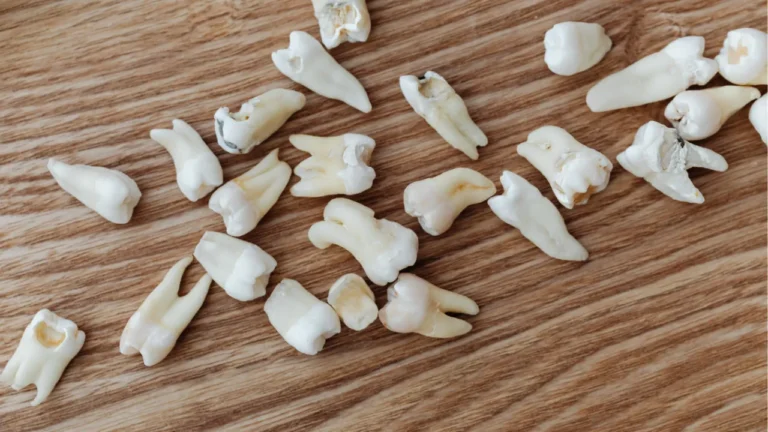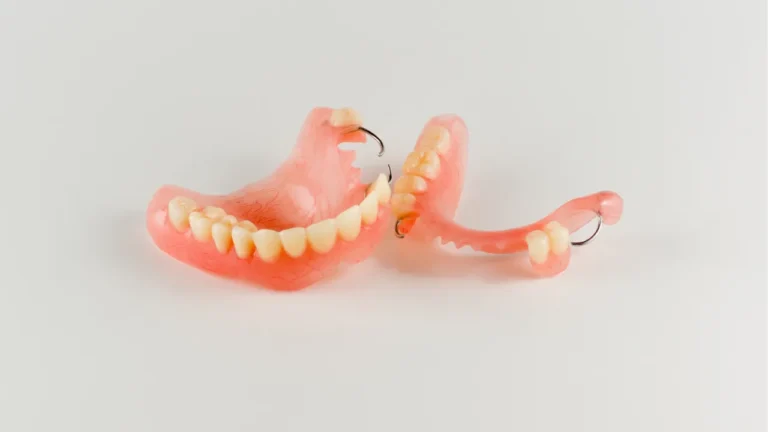Dental inlays and onlays are custom-made restorations used to repair teeth with moderate damage or decay — stronger than fillings, but less invasive than crowns.
They’re the perfect middle ground when a filling isn’t enough, but you don’t need a full crown.
- Inlays fit neatly between a tooth’s cusps (the raised points).
- Onlays cover one or more cusps and may extend over the biting surface.
- Both are crafted in a dental lab to restore strength, function, and a natural appearance.al lab to match your tooth’s shape and restore function and appearance.
Quick Summary: Why Choose Inlays or Onlays?
- Ideal for moderate tooth damage — stronger than fillings, more conservative than crowns
- Custom-made for a perfect fit and natural look
- Durable — can last 10–15 years or more with proper care
- Preserve natural tooth structure compared to crowns
- Easier to clean than large fillings
What Are Inlays and Onlays?
Inlays and onlays are custom-made restorations used to repair teeth that have been damaged by decay or trauma. They’re typically made from porcelain, composite resin, or gold and are created in a dental lab based on impressions of your tooth.
- An inlay fits inside the tooth, between the cusps (the raised points on a tooth).
- An onlay covers one or more of the tooth’s cusps and sometimes extends over the biting surface.
Both are bonded to the tooth to restore its shape, strength, and function.
How Are They Different from Fillings and Crowns?
Inlays and onlays fall somewhere between a filling and a crown in terms of coverage and durability.
- Fillings are best for small areas of decay. They are molded directly into the cavity during your visit.
- Inlays/onlays are used for moderate damage. They’re stronger than fillings and custom-made for a precise fit.
- Crowns cover the entire tooth. They are used when a tooth is extensively damaged or weakened.
Inlays and onlays allow for a more conservative approach—preserving more of your natural tooth compared to a full crown
When Are Inlays or Onlays Needed?
You may be a candidate for an inlay or onlay if:
- You have moderate tooth decay or a large filling that needs to be replaced
- Your tooth is too damaged for a regular filling but doesn’t require a full crown
- You want a durable, natural-looking restoration
- You have a cracked or fractured tooth that needs support
Your dentist will assess the extent of the damage and recommend the best option based on your needs.
The Procedure: What to Expect
The process usually takes two appointments:
1. Preparation and Impressions
- The damaged or decayed part of the tooth is removed.
- An impression of the tooth is taken to create a perfectly fitted inlay or onlay.
- A temporary filling may be placed while your restoration is being made.
2. Fitting and Bonding
- Once ready, the inlay or onlay is tested for fit and colour.
- It is then permanently bonded to the tooth and polished to blend seamlessly with your smile.
Benefits of Inlays and Onlays
- Durable: More resistant to wear and tear than standard fillings
- Custom fit: Precisely crafted to match your tooth’s shape
- Aesthetic: Tooth-coloured options blend in beautifully with your natural teeth
- Conservative: Preserve more of your healthy tooth structure
- Easy to clean: Because they fit snugly, they’re easier to maintain than large fillings
How to Care for Your Inlay or Onlay
With proper care, dental inlays and onlays can last 10–15 years or longer. Here’s how to keep them in top shape:
- Brush and floss daily
- Avoid chewing on hard objects like ice or pens
- Visit your dentist for regular cleanings and check-ups
- Let your dentist know if you experience any discomfort or changes
If you’ve been told you need a large filling or crown, ask about inlays and onlays. They offer a strong, natural-looking alternative that supports your long-term oral health.
Book a consultation with Every Smile Dental today to see if this advanced restorative option is right for you.







